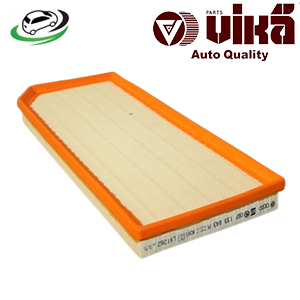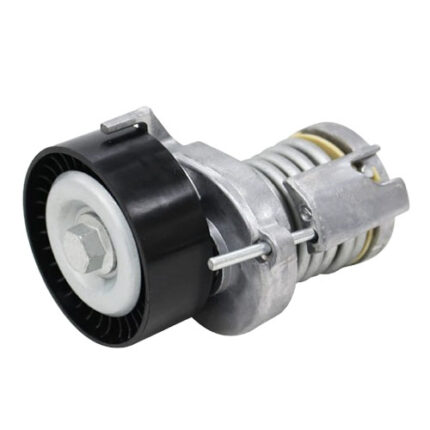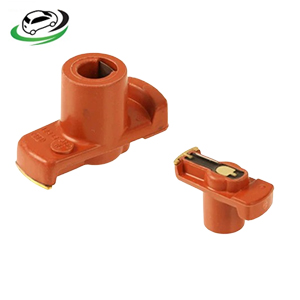Get Distributor Rotor Arm Volkswagen Cabrio III/Eurovan T4/Golf III/Golf IV/Jetta II/Jetta III/Jetta IV/Passat B3/B4 052905225C
The distributor rotor arm is a critical component of the ignition system in older, spark-ignition internal combustion engines. It plays a vital role in directing the high voltage generated by the ignition coil to the correct spark plug at the right time, ensuring the engine runs smoothly and efficiently. This guide explores the function, construction, types, symptoms of failure, maintenance, and replacement of the distributor rotor arm.
What is a Distributor Rotor Arm?
The distributor rotor arm is a rotating component inside the distributor of an ignition system. It is responsible for distributing the high-voltage electricity from the ignition coil to the appropriate spark plug, which then ignites the air-fuel mixture in the engine cylinders. The rotor arm is an essential part of the engine’s ignition timing and is crucial for ensuring that each cylinder fires at the correct moment in the engine cycle.
Functions of the Distributor Rotor Arm
The primary function of the distributor rotor arm is to direct high-voltage electricity from the ignition coil to the correct spark plug. Here’s how it works:
- Timing the Spark: The rotor arm rotates inside the distributor cap, driven by the engine’s camshaft. As it spins, it passes by a series of contacts or terminals within the distributor cap. Each terminal is connected to a spark plug via a spark plug wire.
- Distributing Voltage: The high voltage generated by the ignition coil is sent to the center of the rotor arm. As the rotor spins, it passes close to the terminals inside the distributor cap, transferring the voltage to the appropriate spark plug wire. This action sends a spark to the corresponding spark plug at precisely the right time.
- Ensuring Firing Order: The rotor arm ensures that the spark plugs fire in the correct sequence, known as the engine’s firing order. This sequence is crucial for the smooth operation of the engine and is determined by the engine’s design.
- Synchronization with the Engine: The rotor arm’s movement is synchronized with the engine’s rotation, ensuring that the spark occurs at the optimal point during the engine’s cycle. This timing is essential for efficient combustion and engine performance.
Construction of the Distributor Rotor Arm
The distributor rotor arm is typically a simple yet robust component designed to withstand high temperatures, electrical stress, and mechanical wear. It consists of several key parts:
- Body: The main body of the rotor arm is usually made from durable, heat-resistant plastic or composite material. This body is designed to rotate smoothly within the distributor cap and withstand the harsh conditions inside the engine bay.
- Contact Point: The rotor arm has a metal contact point, typically made of brass or copper, which is positioned near the edge of the arm. This contact point is where the high voltage from the ignition coil is transferred to the spark plug terminals inside the distributor cap.
- Center Contact: At the center of the rotor arm, there is usually a spring-loaded contact or carbon brush that connects to the high-voltage output of the ignition coil. This center contact ensures a consistent connection as the rotor spins.
- Insulation: The rotor arm is designed to insulate the high voltage and prevent it from arcing to the wrong terminal or ground. Proper insulation is critical to avoid misfires or other ignition problems.
Types of Distributor Rotor Arms
There are several types of distributor rotor arms, each designed for specific engine configurations and ignition systems:
- Standard Rotor Arms: These are the most common type of rotor arms found in older vehicles with conventional ignition systems. They are designed to fit standard distributors and are suitable for most passenger cars and light trucks.
- High-Performance Rotor Arms: High-performance rotor arms are designed for use in performance or racing engines. They are typically made from more durable materials and are engineered to handle higher voltages and engine speeds.
- Electronic Ignition Rotor Arms: In engines with electronic ignition systems, the rotor arm may be designed to work with electronic control modules or other advanced ignition components. These rotor arms are often more precise and durable than standard versions.
- Multi-Spark Rotor Arms: Some high-performance ignition systems use multi-spark rotors, which are designed to deliver multiple sparks per cylinder during each engine cycle. These rotor arms are used in advanced ignition systems that require precise timing and increased spark energy.
Symptoms of a Failing Distributor Rotor Arm
A failing distributor rotor arm can cause various symptoms that affect engine performance and reliability. Common signs of a faulty rotor arm include:
- Engine Misfires: One of the most common symptoms of a failing rotor arm is engine misfires. If the rotor arm is worn or damaged, it may not deliver the spark to the correct cylinder, causing the engine to run unevenly or lose power.
- Difficulty Starting the Engine: A faulty rotor arm can make it difficult to start the engine, especially in cold weather. This is because the spark may not be delivered effectively to the spark plugs, resulting in weak or no ignition.
- Rough Idling: A worn or damaged rotor arm can cause the engine to idle roughly or inconsistently. This may be due to the rotor arm failing to distribute the spark evenly across all cylinders.
- Reduced Engine Performance: If the rotor arm is not functioning correctly, the engine may experience a loss of power, poor acceleration, or reduced fuel efficiency. This is because the ignition system is not operating optimally.
- Backfiring: Backfiring, or the sudden popping sound from the exhaust, can occur if the rotor arm is not delivering the spark at the correct time. This can cause unburned fuel to ignite in the exhaust system, leading to backfires.
- Check Engine Light: In some cases, a faulty rotor arm can trigger the check engine light on the dashboard. This light may indicate misfires or other ignition-related issues.
Consequences of Ignoring a Faulty Distributor Rotor Arm
Neglecting to address a faulty distributor rotor arm can lead to several serious consequences:
- Engine Damage: Prolonged operation with a faulty rotor arm can cause severe engine damage. Misfires and poor combustion can lead to increased wear on engine components, overheating, and potential failure of other ignition system parts.
- Reduced Fuel Efficiency: A malfunctioning rotor arm can lead to incomplete combustion, resulting in wasted fuel and reduced fuel economy. Over time, this can increase the cost of operating the vehicle.
- Increased Emissions: Poor ignition timing caused by a faulty rotor arm can lead to increased emissions of unburned hydrocarbons and other pollutants. This can cause the vehicle to fail emissions tests and contribute to environmental pollution.
- Safety Risks: A failing rotor arm can cause the engine to stall, lose power, or perform unpredictably, creating safety risks, especially in high-speed or emergency situations. It is essential to address rotor arm issues promptly to ensure safe vehicle operation.
Maintaining and Replacing the Distributor Rotor Arm
Proper maintenance and timely replacement of the distributor rotor arm are essential for ensuring reliable engine performance and preventing potential issues. Here are the general steps for maintaining and replacing a distributor rotor arm:
- Regular Inspections: Periodically inspect the rotor arm for signs of wear, corrosion, or damage. Check the contact point and center contact for signs of pitting or burning, which can indicate excessive electrical stress.
- Replace Worn Rotor Arms: If the rotor arm shows signs of wear or damage, it should be replaced immediately. Ignoring a worn rotor arm can lead to more severe ignition system problems.
- Clean the Distributor Cap: When replacing the rotor arm, it is also a good idea to clean or inspect the distributor cap. Ensure that the terminals inside the cap are clean and free from corrosion or debris.
- Check Spark Plug Wires: While replacing the rotor arm, check the condition of the spark plug wires. Worn or damaged wires can contribute to ignition problems and should be replaced if necessary.
- Install the New Rotor Arm: To replace the rotor arm, first remove the distributor cap by loosening the retaining clips or screws. Lift the old rotor arm off the distributor shaft and carefully install the new rotor arm in its place. Ensure that it is seated correctly and securely.
- Reinstall the Distributor Cap: Once the new rotor arm is installed, replace the distributor cap and secure it with the retaining clips or screws. Ensure that all connections are tight and that the cap is properly aligned.
- Test the Engine: After replacing the rotor arm, start the engine and check for smooth operation. Listen for any unusual noises or symptoms that may indicate further issues with the ignition system.
Choosing the Right Distributor Rotor Arm
When selecting a distributor rotor arm, it is important to choose a high-quality part that matches your vehicle’s specifications:
- OEM Parts: Original Equipment Manufacturer (OEM) rotor arms are designed to meet the exact specifications of your vehicle. They offer reliable performance and compatibility with your engine.
- Aftermarket Parts: Aftermarket rotor arms can vary in quality, so it is important to choose a reputable brand. Look for rotor arms that have been tested for durability and performance.
- Performance Rotor Arms: For high-performance or racing engines, consider upgrading to a performance rotor arm. These rotor arms are designed to handle higher voltages and provide more precise ignition timing.
- Compatibility: Ensure that the rotor arm you choose is compatible with your vehicle’s make, model, and ignition system. Verify the part number and specifications before making a purchase.
Follow us on Facebook for more parts.



